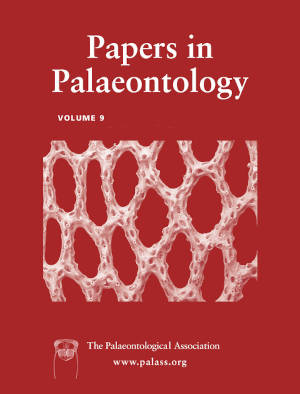Article: Evolutionary process of extremely twisted heteromorph ammonites from the Upper Cretaceous of Japan
Publication: Papers in Palaeontology
Volume:
9
Part:
5
Publication Date:
2023
Article number:
e1525
Author(s):
Akihiro Misaki, Takashi Okamoto, and Haruyoshi Maeda
DOI:
10.1002/spp2.1525
Abstract
Abstract The heteromorph ammonite Pravitoceras sigmoidale with extremely twisted retroversal hook and its probable ancestors, Didymoceras awajiense and D. morozumii, occur mainly in the Upper Cretaceous Izumi and Sotoizumi groups in southwest Japan. Their morphological characteristics were investigated in this study. Morphotypes I–II were recognized in D. morozumii. Morphotypes III–V were recognized in D. awajiense. Morphotypes VI–VIII were recognized in P. sigmoidale. Moreover, all morphotypes were recognized in both the dextral and sinistral forms of these three species. Based on the morphological and stratigraphic relationships, it is considered that the evolutionary process of these species is divided into three steps: (1) shift from morphotypes I–II to III; (2) increase in variation from morphotypes III to III–V; and (3) shift from morphotypes III–V to VI–VIII. By comparing these morphotypes based on the ‘growing tube model’ belonging to the moving frame analysis, it is seen that there are no significant gaps of coiling patterns in the evolutionary processes of this lineage. Meanwhile, morphotypes III–V of D. awajiense have a larger morphological variation than morphotypes I–II of D. morozumii and morphotypes VI–VIII of P. sigmoidale. These results, and the radiometric ages from previous studies, suggest that D. awajiense, with considerable variation between ancestor and descendant species, existed in a short interval. It seems that P. sigmoidale occurred after the continuous but rapid and drastic morphological evolution from D. morozumii via D. awajiense.
